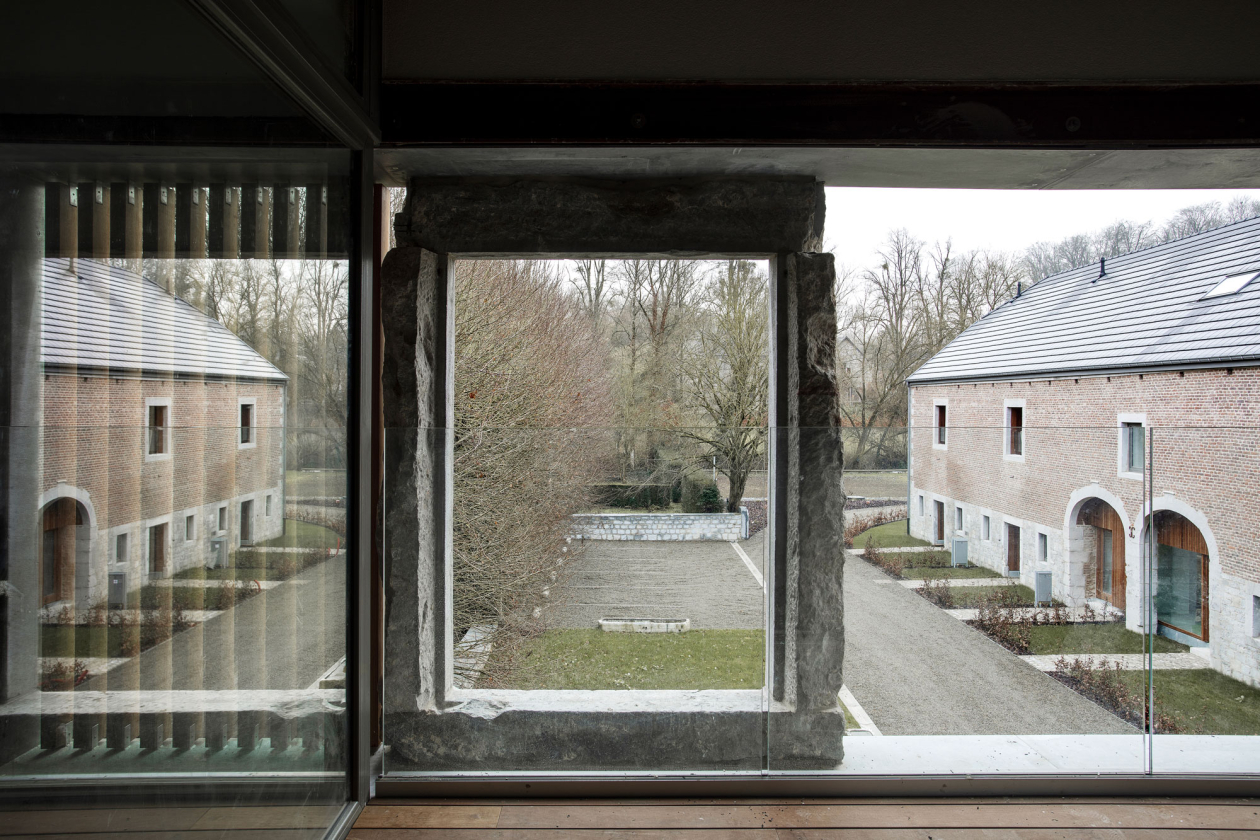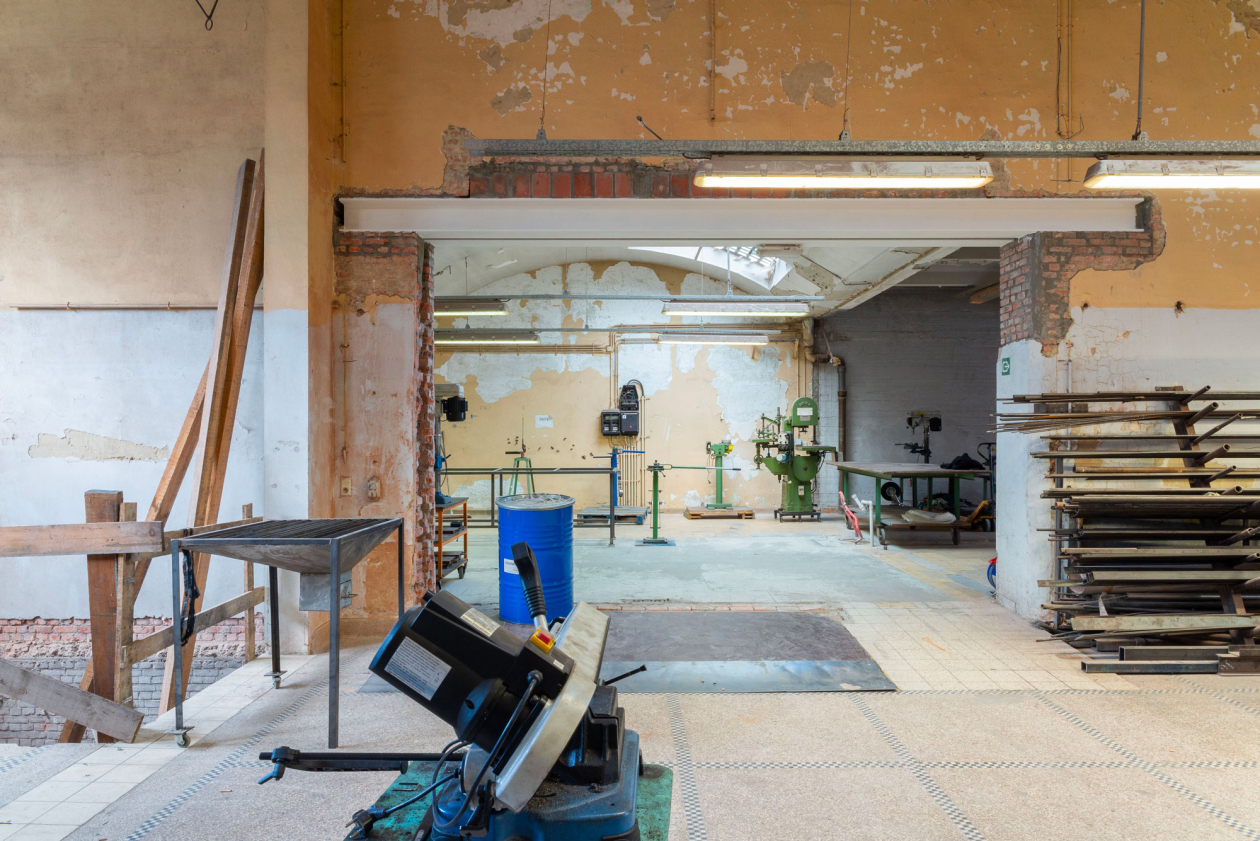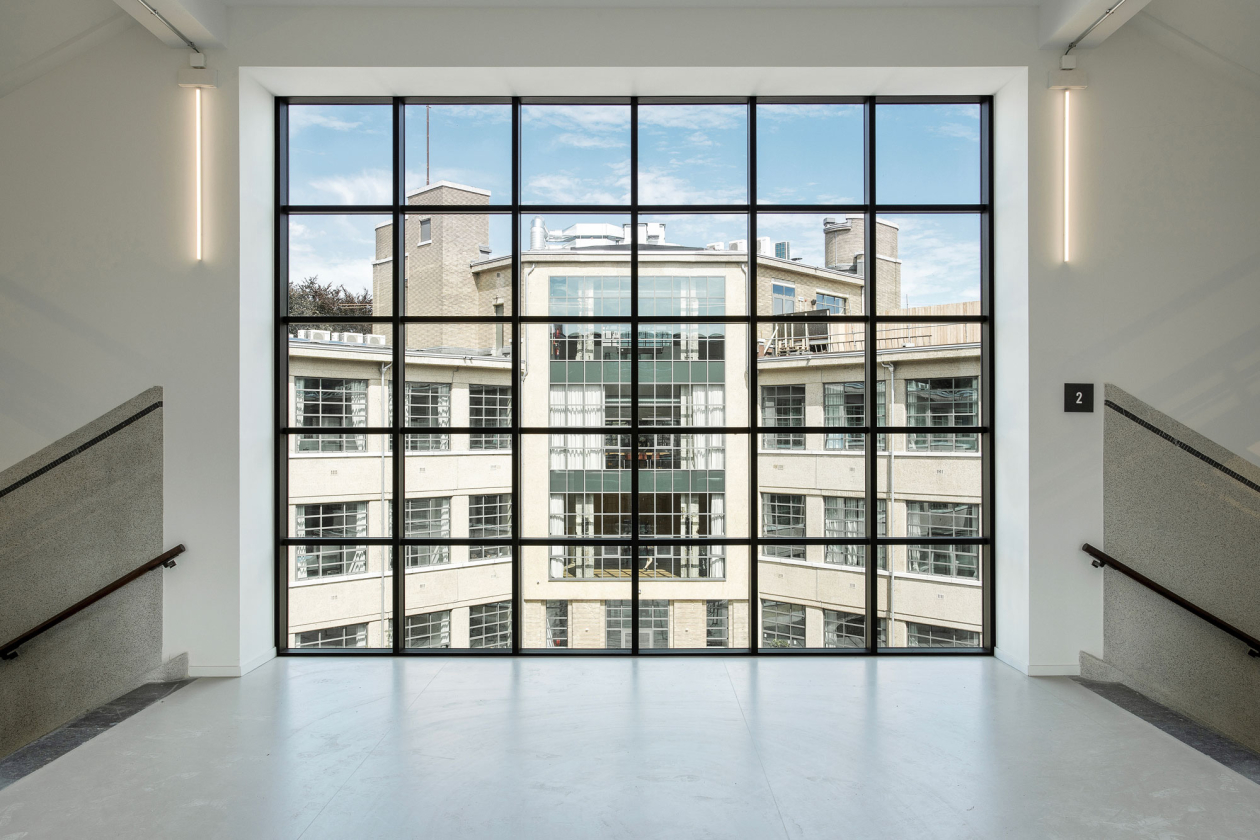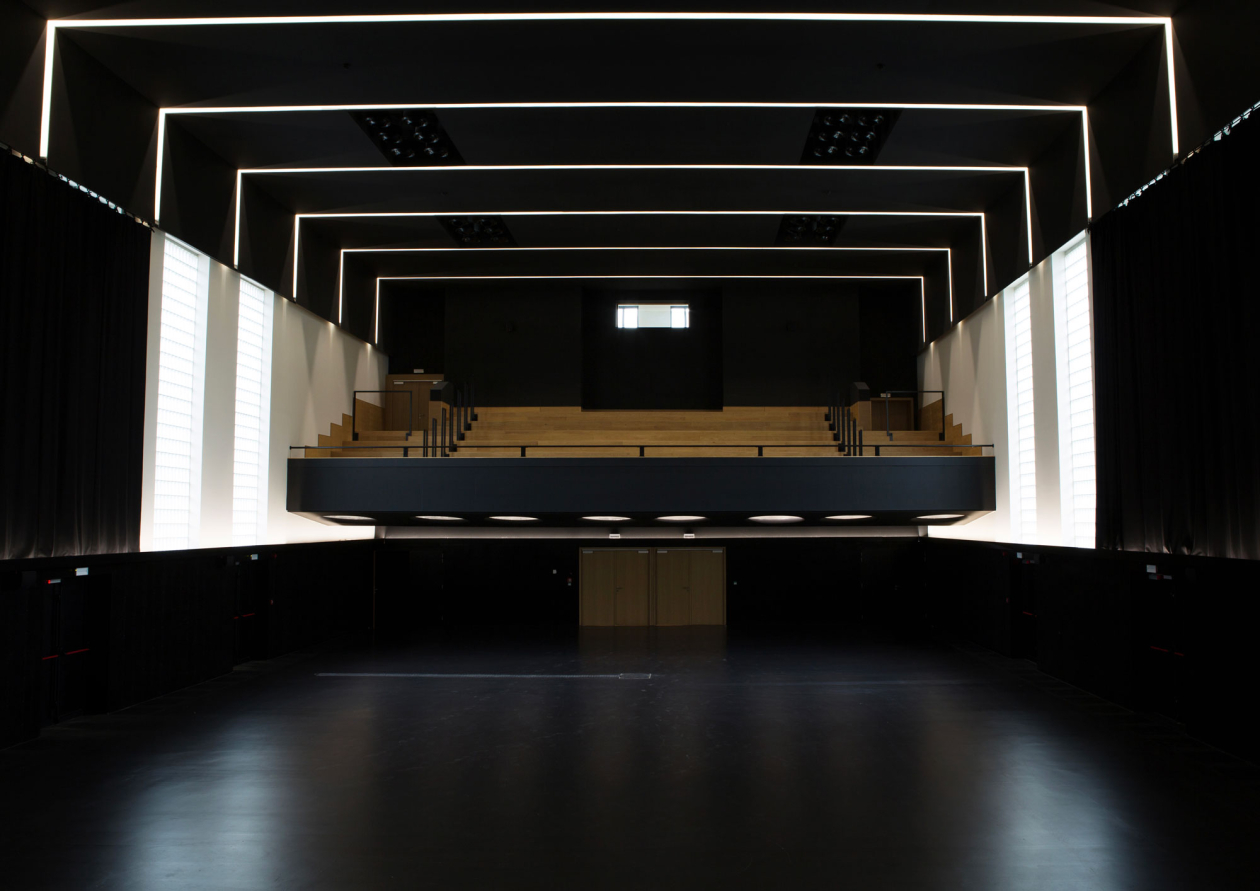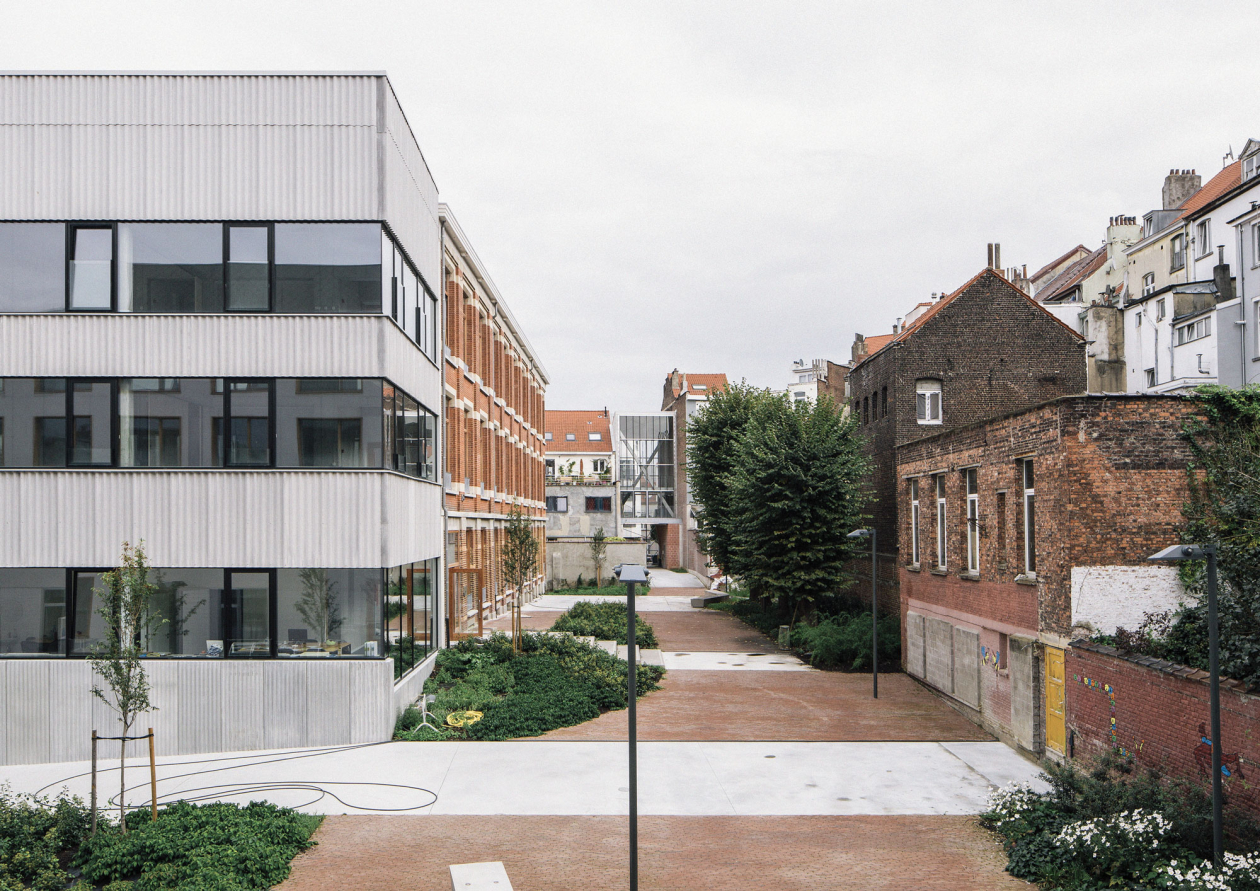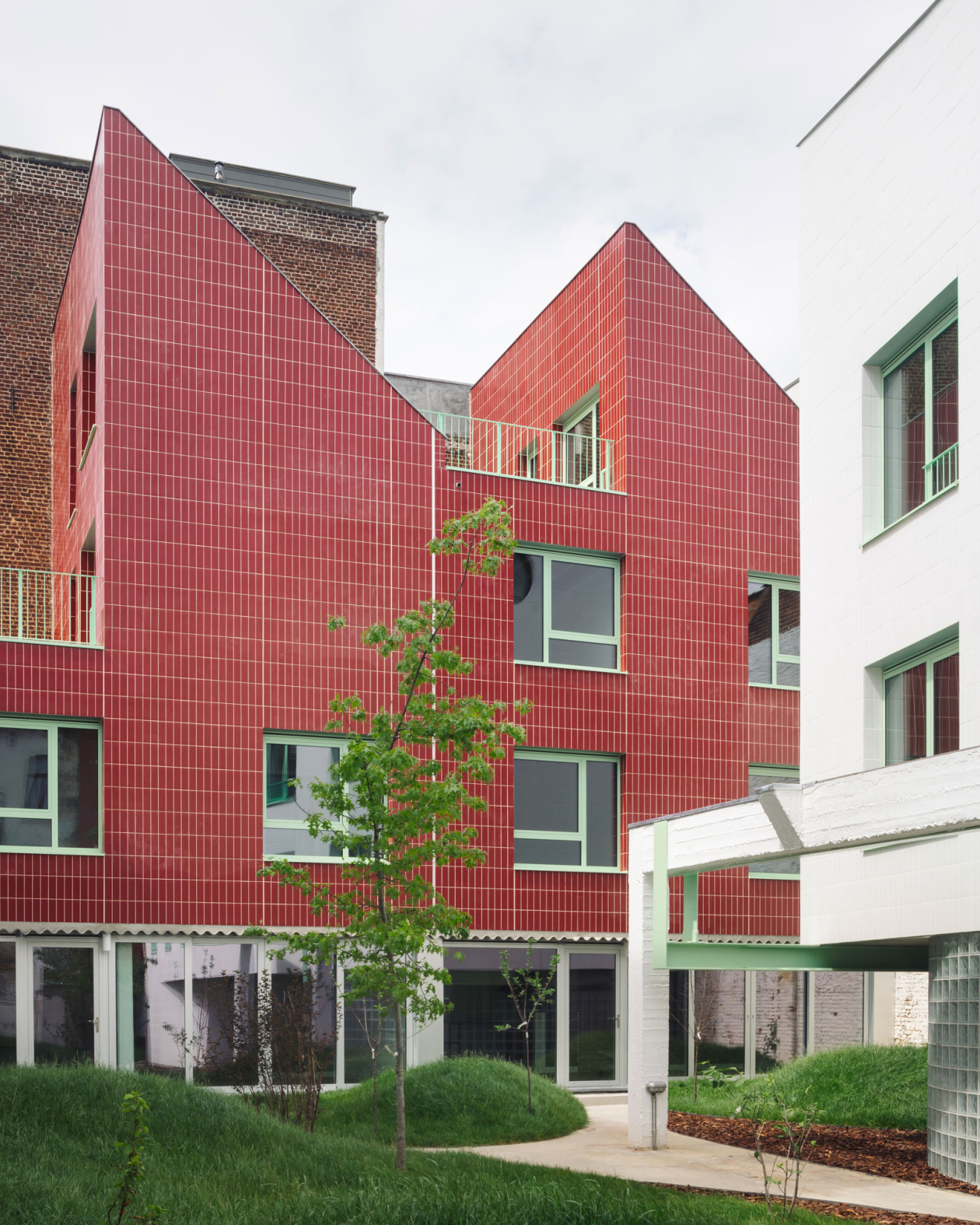Seven Strategies for Reappropriating Architecture
As part of the Réappropriations exhibition, the ICA has selected seven projects featured in the book Architectures Wallonie-Bruxelles Inventaires #4 2020-2023 which respond to its manifesto Towards a regenerative approach to architecture:
"Regenerative development is more ambitious than sustainable development and aims to create resilient and equitable systems that reconcile the needs of society and the integrity of nature from what is already there, from its immense repository of grey energy".
And more specifically, in one of the 29 points: "Architecture and urban and territorial development must work in priority on the regeneration of what already exists".
Label Architecture's approach to the renovation and extension of the Loverval sports centre can be summed up in two actions: copy-move-paste and copy-mirror-paste. The extensions duplicate the existing building, in a way that does not reveal the intervention.
The rehabilitation of a farm in Pailhe by Olivier Fourneau Architectes proposes a collective way of life in a preserved hamlet as an alternative to the construction of new housing estates.
The Zinneke project by Ouest Architecture and Rotor DC aims to renovate and restructure former printing workshops in Brussels. The architects have managed a dual transition: social and environmental.
Artau Architectures is transforming the emblematic modernist building of the University of Liège's Mechanical Institute into the ARC residence, a residential coliving space for young people.
The renovation of a modernist building into a music complex in Seraing by the Atelier Chora represents part of a strategy to convert urban districts.
The ECAM mixed-use facilities in Saint-Gilles by AgwA are redeveloping a former school, where the architects are taking advantage of a crossing block to transform it into a public garden in which the new programme is established.
On Place Duchesse in Molenbeek, a preserved town house gives access to two former industrial halls in the inner part of the block, converted by Notan Office into housing by adapting the living spaces to the size of the blocks.

